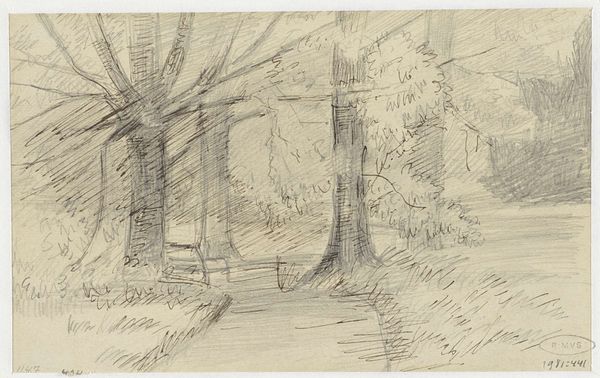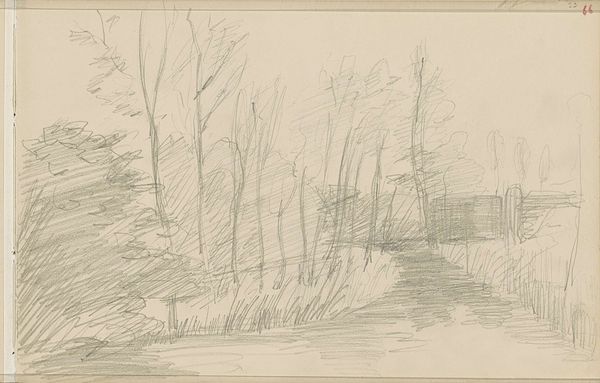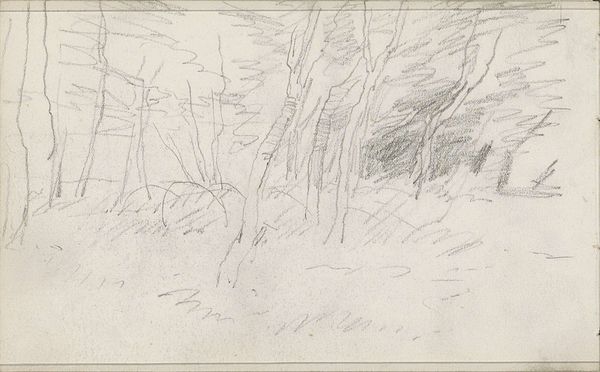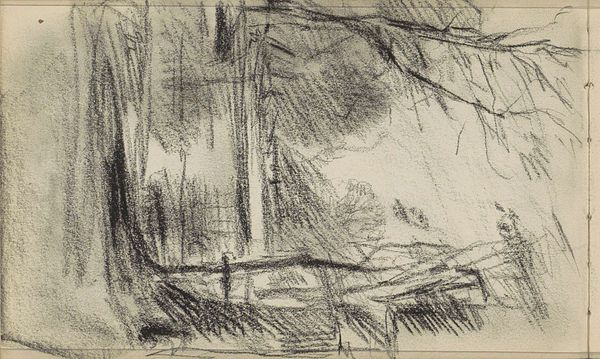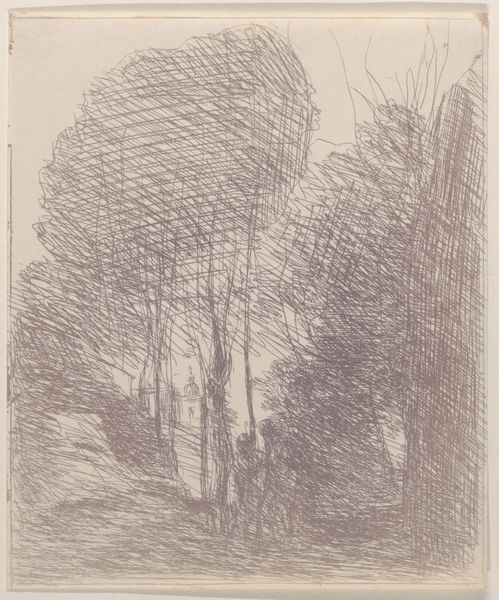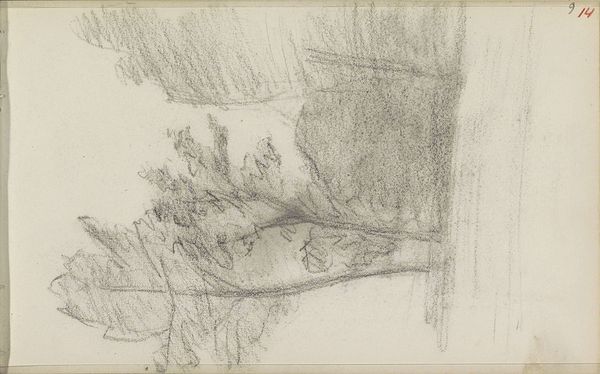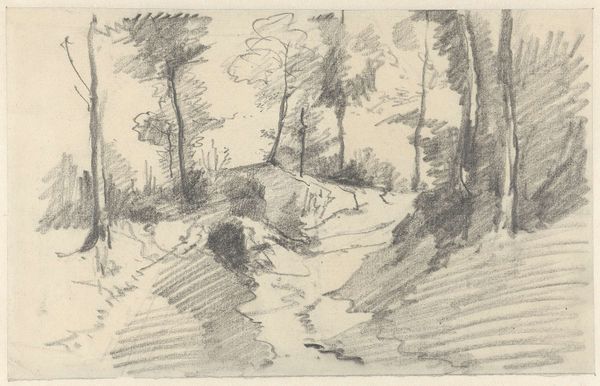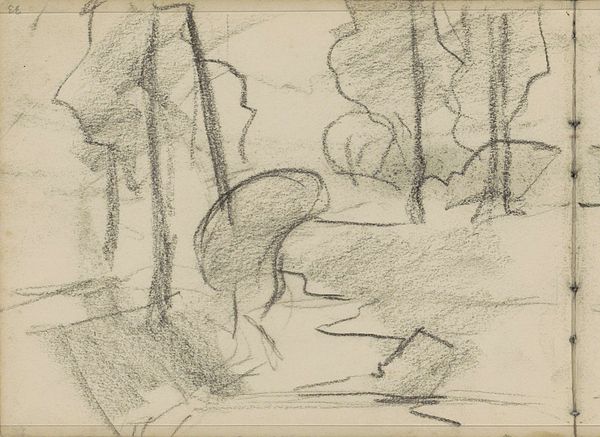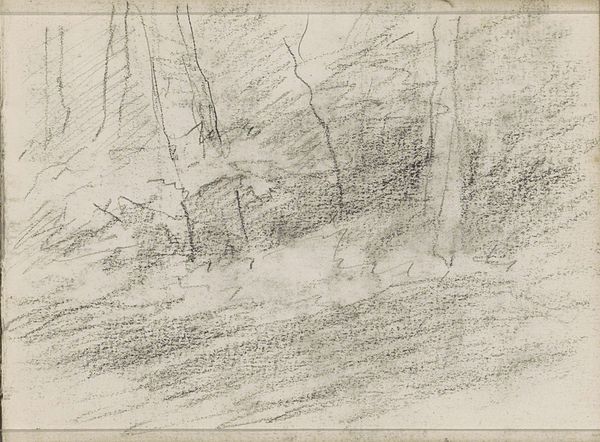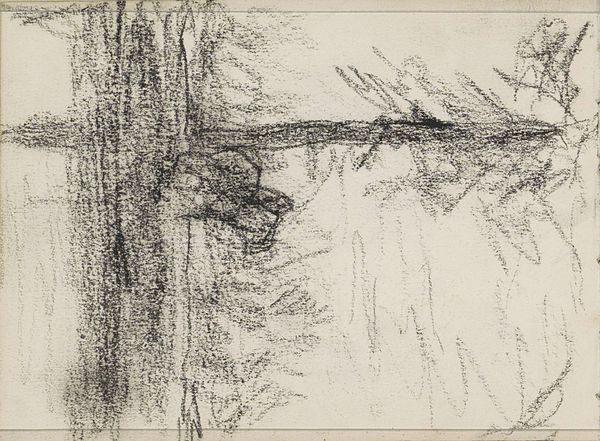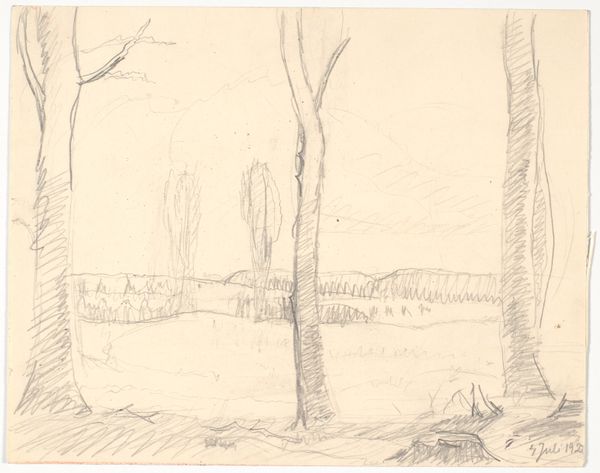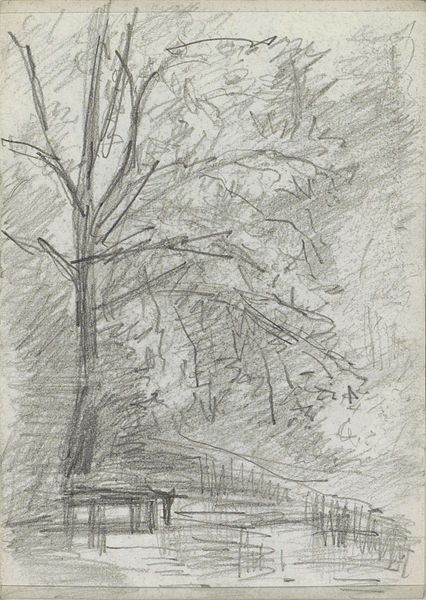
drawing, pencil
#
drawing
#
pencil sketch
#
landscape
#
forest
#
pencil
#
sketchbook drawing
#
realism
Copyright: Rijks Museum: Open Domain
Editor: So, here we have Jozef Israëls' "Rivier in een bos," which translates to "River in a Forest," likely created sometime between 1834 and 1911. It's a pencil drawing, and I find it immediately calming. The textures are so soft. What strikes you most about this piece? Curator: I'm drawn to the social implications embedded in seemingly simple landscape depictions. Israëls, though associated with the Hague School, often infused his work with a deep empathy for the working class. Does this drawing, with its unadorned naturalism, romanticize a retreat from industrial society? Or, is it simply observational? Editor: I hadn’t considered it as a social commentary. I saw it more as a study of light and shadow, a purely aesthetic exercise. Curator: Perhaps. But consider the period. The late 19th century was marked by rapid industrialization and urbanization. A drawing like this, featuring a pristine, untouched landscape, may function as a subtle critique, highlighting what was being lost or, conversely, a privilege unavailable to many. Does the river’s presence suggest access, or is it a barrier? Who has the leisure to wander in this forest? Editor: That's a compelling point. The river could represent both sustenance and separation. And the darkness of the forest, that contrast between light and shadow, perhaps signifies uncertainty or even danger for some, while offering respite for others. Curator: Precisely. Art is never created in a vacuum. Even a sketch like this speaks to the complex social and economic realities of its time. Seeing it in that light challenges the traditionally idyllic perception of landscape art. Editor: I’ll never look at a landscape quite the same way again! This has made me realize how much context shapes our interpretation. Curator: And how much art can teach us about the world beyond the canvas.
Comments
No comments
Be the first to comment and join the conversation on the ultimate creative platform.
